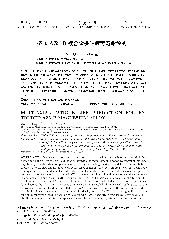摘要
Magnesium alloy components were widely used in automobile and aircraft industries, due to their light weight, high specific strength, stiffness, damping capacity, machinability, and recyclability. Engineering components subjected cyclic loading inevitably and led to fatigue failure. Most studies on magnesium alloy were focus on uniaxial fatigue, very limited work has been done of magnesium alloys under multiaxial loading. In this study, strain-controlled multiaxial fatigue experiments were conducted on extruded AZ31B magnesium alloy using thin-walled tubular specimens in ambient air. Four loading paths, including fully reversed tension-compression, cyclic torsion, 45 degrees in-phase axial-torsion and 90 degrees out-of-phase axial-torsion, were adopted in the fatigue experiments. It is observed that the strain-life curve displays a distinguishable kink under each loading path at the equivalent strain amplitude around 0.3% to 0.55%. The fatigue life under the proportional loading path is the highest when equivalent strain amplitudes higher than 0.45%, and the fatigue life under the tension-compression loading path is the highest when equivalent strain amplitudes lower than 0.45%. For the same equivalent strain amplitude, fatigue life under nonproportional loading resulted in the shortest fatigue life. Three critical plane multiaxial fatigue criteria were employed to predict fatigue life. Predictions by Smith-Waston-Topper (SWT) parameter do not agree well with the fatigue life for the tension compression and cyclic torsion loading, and 76% predicted results are within factor-of-five boundaries. The Fatemi-Socie (FS) parameter and a modified SWT parameter are found to be able to predict fatigue lives reasonably well for all loading paths, and 95% predicted results are within factor-of-five boundaries. In addition, crack initiation of extruded AZ31B and AZ61A magnesium alloy based on experimental observation were discussed to explain prediction results vary much for the same multiaxial fatigue criterion between the two materials. It was demonstrated that AZ31B magnesium alloy and AZ61A magnesium alloy has different damage mechanism due to different microstructures. Optical microscopy observations exhibited lamellar twinning exist in a little big elongated grains with an average grain size of 50 mu m in extruded AZ31B magnesium alloy at strain amplitude of 1%. In the same situation, mechanical twins were observed in almost every equiaxed grain with an average grain size of 20 mu m in extruded AZ61A magnesium. Ex-situ SEM microscopic observation of the microstructure evolution showed fatigue micro-cracks were at the grain boundaries or slip bands in extruded AZ31B magnesium alloy, while at twin boundary in extruded AZ61A magnesium alloy.
- 出版日期2012-12-11
- 单位浙江工业大学
